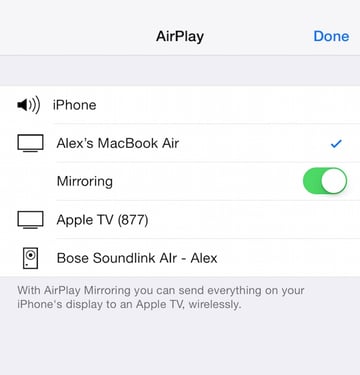How To Mirror My Iphone On My Mac
Read Time: 3 mins Languages:
Screencast

Being able to demonstrate a feature, setting, or new application to a large group of people can be invaluable. Whether presenting a live keynote or online webinar, the ability to mirror an iOS device to the Mac's display could mean the difference between success and failure.
Luckily, there are a couple of different ways to make this mirroring magic happen.
In this tutorial, I will show you how to mirror an iOS device to a Mac using either:
- QuickTime or
- Reflector with Airplay
I will also highlight the advantages and disadvantages of each method along the way.
Mirroring With QuickTime
The pros of mirroring with QuickTime are many. It doesn't cost anything extra, the responsiveness is almost instant, and setting it up couldn't be easier.
The only con is that it requires a wired connection between the Mac and iOS device.
Setting Up
Connect the iOS device to the Mac via a Lightning-to-USB cable. Note: This connection may cause iTunes and/or Image Capture to automatically launch. Those programs may start trying to syncing with the iDevice, and create lag. So be sure to close those applications before moving forward.
Once the device is connected, launch QuickTime. QuickTime will bring up a filepicker menu. The goal here isn't to play an existing file, so click Done.
From the menu bar, click File, then New Movie Recording.



The default input device will be set to the iSight camera. To change it to the iOS device, click the down arrow next to the record button. Then select the iOS device from the camera list. The device's screen will instantly appear and any actions taken on the device will be mirrored to the Mac's display.



An added advantage of this method is that the record button is just one click away. Using QuickTime's built in recording feature makes creating iOS based screencasts a breeze.
Mirroring With Reflector
The largest pro of using Reflector is that it allows for mirroring without any wires. The mirroring works over Wi-Fi, much the same way that Mac or iDevices mirror to the AppleTV.
This also requires that both the Mac and iOS device be connected to the same Wi-Fi network. And the lack of wire could mean a bit more lag. It also requires a paid software be installed on the Mac. But Reflector does offer a free seven-day trial, so it is worth a download.



- Open the web browser and go to http://www.airsquirrels.com/reflector/.
- Click Try Reflector, then Download Reflector.
- Download the
.dmgfile and open it. - Drag Reflector to the Applications folder.
- Launch Reflector.
- Click Try Reflector.
You won't see any windows or other application screens appear. Reflector will live in the dock until an iOS device is connected to it.



On the iOS device, swipe up from the bottom bezel to open the Control Center. From the Control Center click AirPlay. Choose the Mac to which you wish to mirror from the list, then enable Mirroring.



Conclusion
In this tutorial I showed you two different ways to mirror an iOS device to the Mac. I also pointed out their individual pros and cons along the way.
Using these techniques you could demonstrate a new application live and in person, host an interactive webinar, or even record a screencast. Give them both a shot and let me know how it goes in the comments below.
How To Mirror My Iphone On My Mac
Source: https://computers.tutsplus.com/tutorials/two-different-ways-to-mirror-an-ios-device-to-a-mac--cms-23533
Posted by: piperphers1941.blogspot.com

0 Response to "How To Mirror My Iphone On My Mac"
Post a Comment